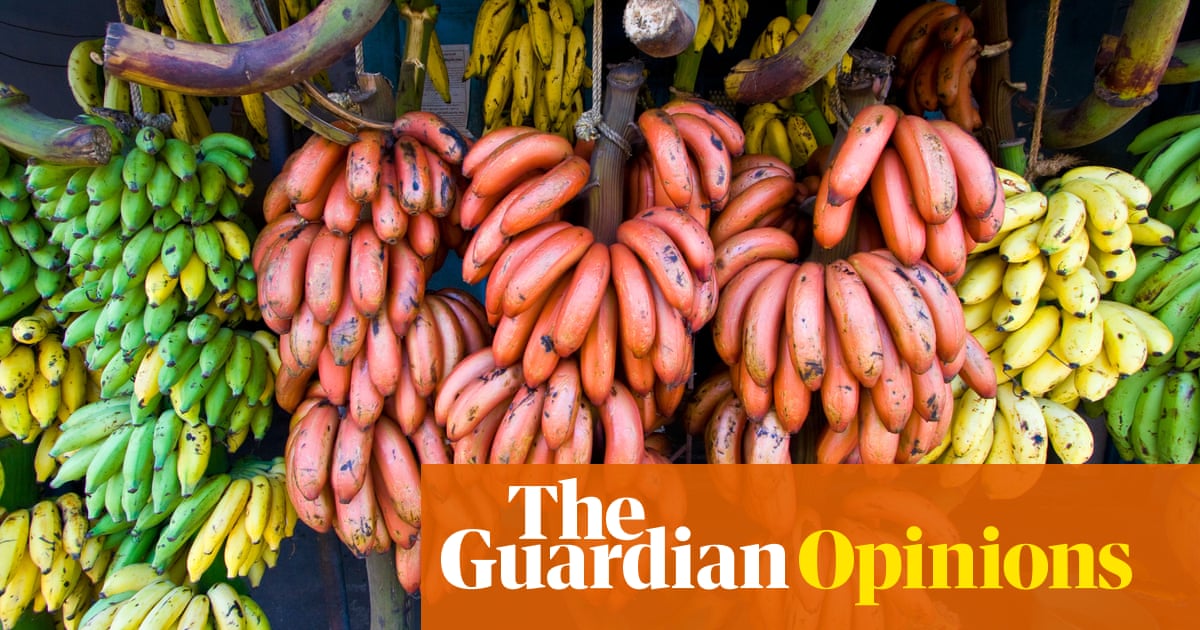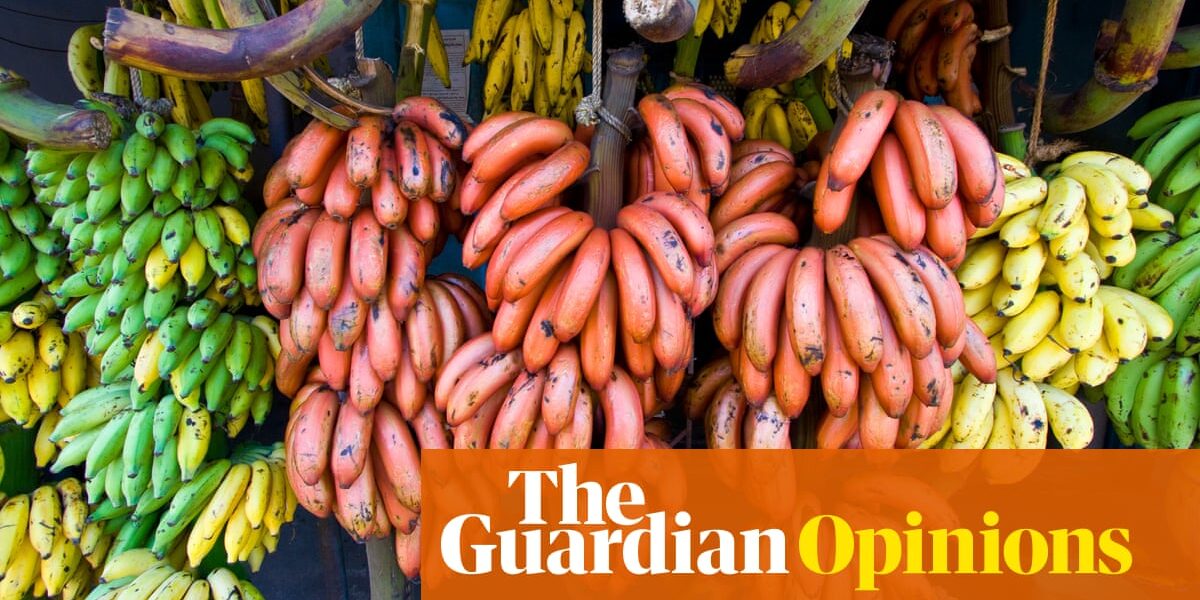There are over 1,000 types of bananas in existence, yet we only consume one. This raises an illogical aspect of our eating habits.

T
Last week’s gathering of the World Banana Forum in Rome did not receive much media attention. However, the topics discussed have significant consequences for everyone. The popular yellow fruit serves as a warning signal for the fragility of our modern food system. The current struggles facing bananas should motivate us to advocate for a diverse range of food options.
Peeling a banana reveals a remarkable supply chain worth $10 billion. This supply chain efficiently transports vast quantities of a tropical fruit from one end of the world to the other, making it one of the most affordable and easily accessible products in grocery stores. On average, a single banana costs around 12 pence. However, there is no contingency plan or safety measure in place if the primary variety of banana, which is heavily relied upon by the global market, experiences a decline.
The most notable statement at this year’s conference was made during the introductory speech. Dr. Qu Dongyu, the director general of the Food and Agriculture Organization of the UN, raised the question of why the world relies heavily on one type of banana, the Cavendish, despite there being over 1,000 known varieties. He suggested that this needs to be addressed, possibly implying that we all play a role in this issue.
Many individuals do not question why every banana they have consumed has a similar appearance and taste. Few have had the opportunity to try a blue java banana from Indonesia, known for its creamy texture and vanilla ice-cream flavor, or a Chinese banana with a strong and fragrant aroma, referred to as go san heong, meaning “smellable from the nearby mountain”. The demand for inexpensive and high-yielding bananas has led to vast plantations of a single type of banana, which is also true for many other crops. This uniformity in the food system is a risky approach as it hinders our ability to adapt to a rapidly changing world.
Wild bananas grow from seed, but every individual Cavendish banana is a clone, created from a portion of the plant’s underground suckers. As a result, the Cavendish is unable to adapt to changing environmental threats and is vulnerable to Panama disease. This disease, also known as fusarium wilt, has been rapidly spreading through monocultures of Cavendish bananas in various regions, including Asia, Australia, Africa, Latin America and the Caribbean. A mere few spores, whether carried on a garden tool or clothing, can infect an entire plantation, rendering it unsuitable for growing Cavendish bananas.
A potential option for combatting this destructive illness is to utilize genetic modification or gene-editing techniques to create bananas that have increased resistance. Dr. James Dale, a faculty member at Queensland University of Technology, devoted many years to creating a modified version of the Cavendish banana that would be highly resilient against the specific strain of Panama disease currently threatening the Cavendish. However, Dale acknowledges that this is not a definitive solution. In the long run, he believes that increasing diversity within the food system is the key.
While researching for my book called “Eating to Extinction”, I had a transformative conversation with Dale. He shared with me that monocultures are not found in nature, and this can teach us valuable lessons. The global food system used to have a greater diversity, but this diversity was lost when fewer highly productive crops were introduced. In response to this, the National Institute of Agricultural Botany (NIAB) in Cambridge and the John Innes Centre in Norwich, two prominent crop research centers in the UK, are actively working to reintroduce diversity into the fields. They are utilizing genetics from traditional varieties that were on the brink of extinction due to the popularity of modern varieties.
Researchers are examining other vulnerable crops, including coffee, which is composed of different types that originated from a limited number of plants distributed globally during the 1700s and 1800s. The urgent issue of climate change is causing concern for the survival of the two main coffee species we rely on – arabica and robusta. As a result, experts at Kew Gardens have pinpointed flavorful and workable alternatives from over 120 other coffee species worldwide. One of the most promising options is Coffea stenophylla, a species found in Sierra Leone that was close to extinction in the 1950s.
On a governmental level, there is room for hope. During Cop15, which took place in Montreal in December 2022, 196 nations committed to the Global Biodiversity Framework. The main goal is to preserve 30% of the world’s land and seas by 2030, with a focus on taking immediate measures to prevent the extinction of endangered species. What is not widely recognized is that this also includes domesticated species, encompassing approximately 7,000 plants that have been utilized for sustenance by humans for thousands of years.
There are efforts by farmers, such as Wildfarmed, to try out different types of wheat. This flour is now being used by popular stores and pizza chains. At the same time, in eastern England, a company called Hodmedod’s, founded by three researchers in food and farming, is turning to the ancient crops grown during the iron age and bringing back forgotten types of grains and legumes, like carlin peas and emmer wheat.
If Qu Dongyu’s statement about the lack of retailers and consumers accepting different varieties is accurate, then we must take action. We must make it clear that we desire more diversity. This call to action could be as easy as purchasing a new type of bean or pea, trying a unique variety of wheat, or even supporting a different type of banana if it becomes available in stores.
-
Dan Saladino is a writer, presenter, and the author of Eating to Extinction: The World’s Most Endangered Foods and the Importance of Preserving Them.
Source: theguardian.com


